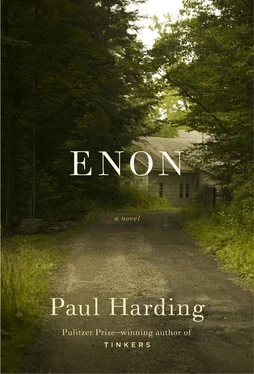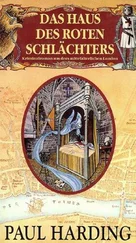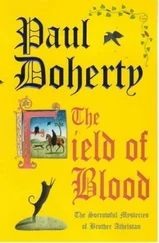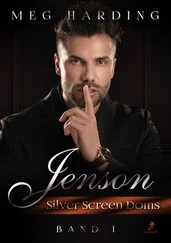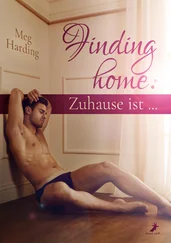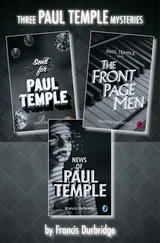The hill was leveled in 1839 to build an icehouse for the Enon Ice Company. Eighty-four years later, in 1923, Rebecca Fisk, a descendant of John Fisk, who had assisted Hugh Peters in his ecclesiastical activities during that first year of Enon’s existence and subsequently established the first church of Enon after Peters had returned to England, donated the money to the town to buy, as her original instructions, on file in the town clerk’s office, read, A large, appropriately sightly rock, a bronze plate, and the inscription thereupon, for commemorating the introduction of God’s Word to Enon by Hugh Peters, martyr, to be placed as near as can be determined to the original location of Peters’s Pulpit .
Kate and I used to ride past Peters’s Pulpit once in a while on our bikes. I never had a good bike when I was a kid. Neither my grandparents nor my mother knew or thought much about them, and I remember how frustrated I used to get trying to convince them how important a good bike was, for getting around town, for hanging out with my friends. When I was maybe seven or eight, I persuaded my mother to let me buy an old bike off one of the older kids in the neighborhood, a guy named Doug Draper. His parents had just bought him a new bike that looked like a real dirt bike. He pitched his old bike like a used car salesman.
“This kind of banana seat is the best; you can fit two people on it and the guy on the back can lean back against the sissy bar. And these ape hanger handlebars are the best; if you move them up, then you can stand up and lean way forward when you pedal and go wicked fast. Or you can move them down and lean way back and just cruise around, like a chopper. This is the best kind of bike except for my new one.”
The bike was a shiny brownish orange. I begged my mother for the money for a week, until she gave me the four dollars Doug wanted. I paid Doug and hopped on the bike and started toward my grandparents’ house, across the village. Less than halfway there, the air had leaked out of both tires and the handlebars had come loose because the bolt that held them in place was stripped.
My second bike was a red three-speed with a saddle seat and a metal emblem of Robin Hood on the handle post. I was too big for it and all my friends called it a girl’s bike, but it worked and I used it to get around the North Shore for four years.
I was not especially traumatized by those experiences. It exasperated me, though, that no one in my family could figure out how to patch a tire or tighten a pair of handlebars or raise a seat, especially my grandfather, who had a basement and a garage full of tools.
When Kate was four, I was determined that she would have a good, solid, well-maintained, and new bike for every stage of her girlhood. I took her to a bicycle store in the next town over, called Black’s. Black’s was located on the corner of a block of local shops, in between a cobbler and a locksmith. The three or four guys who worked there wore short-sleeved, button-up shirts with gray pinstripes and kept their glasses cases and pens and receipts in the breast pockets. They wore dark green work pants and Hush Puppies shoes, had army-induction haircuts, and looked like they should be teaching mechanical drawing at the vocational high school. But they knew all the bikes as if they’d designed them themselves, and the store carried only the most straightforward, unadorned, solidly built brands. There were no tassels or decals of cartoon characters or fake plastic motorcycle engines clipped onto the frames. The first time I took Kate there she was uninterested until we walked through the door and she saw the bikes arranged in two long rows down either side of the store, men’s and boys’ on the left, women’s and girls’ on the right, smallest to largest. Kate let go of my hand and dashed to the girls’ bikes. She stopped and stood in front of a bright blue bike fitted with training wheels.
“Look at this one, Dad!” she said. There was a salesman on duty at the back of the shop, working on a bike clamped to a repair stand.
“Hi there,” he called. “Can I give you guys a hand with anything today?”
“Well, this is Kate and we’re looking for a bike for her,” I said.
“Well, hi, Kate. That’s a good thing,” he said. “Looks like it’s about the right time.” He tossed the hex wrench he was using into a tool tray and wiped his hands with a handkerchief from his back pocket. “What kind of a bike do you think you’re looking for?”
Kate pointed to the blue bike. “This one.”
“That’s a great one,” the salesman said. “I’d say that one or one of these other two would be good for you, too.” He drew the blue bike out into the aisle and two others, one sunflower yellow, the other nail-polish red. Each was fitted with training wheels. Kate barely looked at the yellow and red bikes.
“This one,” she said. I was surprised by how adamant she was. My first reaction was to think she was almost being a little rude to the salesman, but I realized that it was more like conviction, a kind of intensity in her I’d never seen before that the blue bike seemed to activate.
“I like that,” the salesman said. “You know just what you want. Now, I can get you a helmet that goes with that blue color too, if you want,” he said.
“You want that, love?” I said. Kate came out of the little spell the bike had her under. She looked at me and beamed and said yes, she’d like that.
“Well, hop on it and we’ll get the seat adjusted for you,” the salesman said. Kate looked at me, suddenly shier, blushing.
“It’s okay, sweetie,” I said. “Get right on.” She grabbed the handles and put a leg over the bike.
“Here,” I said. “I’ll hold it still so you can sit.” I held the middle of the handlebars and Kate wiggled herself up onto the seat. She put her feet on the pedals and leaned forward and made a serious face, as if she were racing, and made a sound like rushing wind with her mouth.
“It’s going to be really cool,” I said to her.
“Yeah,” she whispered. “Really cool. I’m going to go fast .”
A sound, working bike, with properly filled tires and an oiled chain and tight handlebars, had always seemed impossible when I’d been young, and I tried to imagine the feeling of being a little kid in possession of such a treasure.
“We can go all over town,” I said to Kate. “Every night after I get home from work, if you want. All over.”
“And we can race!” she said.
The first bike trip Kate and I went on, I was too ambitious and we barely made it to Peters’s Pulpit. We ate the lunches I’d packed. Kate asked me what a sermon was and I stood behind the rock and pretended to bang it with my fist and threw my arms up and cried, “Ah, Sister Kate! Unless my name be not the right, ah, Reverend Borrowed Moment , then allow me, ah, to shout about how we are, ah, blessed to be, ah, together , ah, like this , under the, ah, sun, and, ah, down by the clean clear, ah, waters of Enon, ah, Lake —yes that water , child, where so many good things happen !” I felt impious about my imitation of a preacher, but not about being blessed to be together or about the water.
We tried to ride our bikes back home but Kate tired and was close to tears after a hundred yards. I called Susan to come get us and we leaned our bikes against an old fence and Kate sat on a stump and twirled a stalk of chicory between her fingers and hummed to herself. Susan wasn’t long, but I felt a genuine sense of rescue when I saw the familiar white station wagon round the corner a quarter mile away. I thought to myself, We have each other.
Susan pulled over and opened the car door and stepped out and rested one elbow on the car door and the other on the roof and smiled at us. “My two cyclists are bushed!”
Читать дальше
